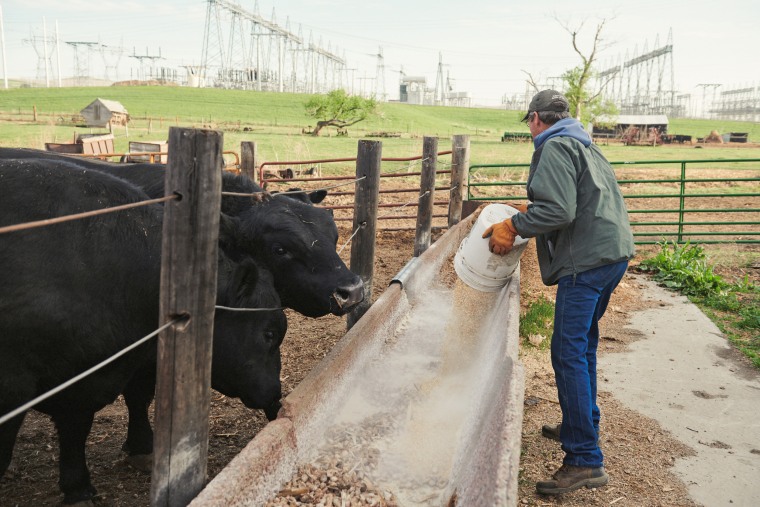Russia’s invasion of Ukraine could force some livestock farmers in the Midwest to pay double for animal feed, a tight enough squeeze to push farms out of business, farmers and agriculture experts say.
Commodity prices for corn — part of the essential diet for steers, pigs, chickens and turkeys — had been on the rise before the war began about three weeks ago, and they have skyrocketed since then, demonstrating how the conflict is affecting industries globally.
The farmers are also being affected by rising fuel costs, as many of them use diesel to power their tractors and other heavy machinery.
“The livestock farmers are very nervous because of the high feed costs that we’re going to have to face,” said Iowa livestock farmer Edward Morse, 59. He said farmers often need about 80 bushels of corn to raise just one steer.
The price of corn hit $7.4775 per bushel shortly after the war began last month, the highest it has been in nearly a decade and about $3 per bushel higher than it was last year.
Ukraine exports about 16 percent of the world’s corn. While most of it is imported by Eastern European countries, the uncertainty created by the conflict has led to volatility in the commodities market, pushing prices higher around the world.
Similarly, although most of Russia's oil goes to Asia and Europe, the war in Ukraine has also pushed gas prices higher in the U.S. The price of diesel fuel is $5.1 per gallon, compared to $3 a year ago, according to AAA.
That means livestock farmers in the Midwestern U.S. are feeling the financial strain of a war being fought a world away.
“The cost of fattening up animals on corn has gone up dramatically. It’s going to pinch their income,” said Ernie Goss, an economics professor at Creighton University. “This is a big concern.”
Terry Hayhurst, an Indiana farmer who raises cattle in addition to growing corn and other grains, estimates his expenses will more than double this year, from $300,000 to $700,000, as the prices for corn and diesel fuel increase.
Livestock farmers largely feed their steers corn, grain and soybean meal to boost their weight from about 700 to 1,350 pounds. Once they reach that weight, the animals are sold to meat processing plants and slaughtered for beef.
In Nebraska, one of the top red-meat-producing and -processing states, some farming experts believe the war will doom some livestock farmers who are already paying more for animal feed.
“The longer this war goes on, the more ranchers and farmers who raise cattle will be put out of business. It’s hard to say how many,” said John Hansen, the president of the Nebraska Farmers Union. “This war will have adverse effects for livestock producers.”
In turn, some of that cost could be passed along to consumers.
“Consumers will be negatively affected in terms of prices,” Goss said. “The fact is the cost for the farmer has gone up, so a portion of that has to be passed to the consumer in higher prices.”
Farmers could try to save money by feeding farm animals alternative foods like grass, corn stalks and silage, Goss said, adding, however, that the “fattening isn’t as quick."
Some farmers also said they would cut down on feeding costs by not raising their animals to be as large and selling them at smaller weights.
As animal feed costs increase, demand from retail consumers should allow farmers to weather the storm, said Andy Tauer, the executive director of public policy at the Indiana Farm Bureau.
But Kendell Culp, an Indiana livestock farmer who raises cattle and hogs in addition to growing corn, soybean and wheat, said that “if the livestock prices do not follow up in value to equate what the grain and feed costs are,” farms could close.
